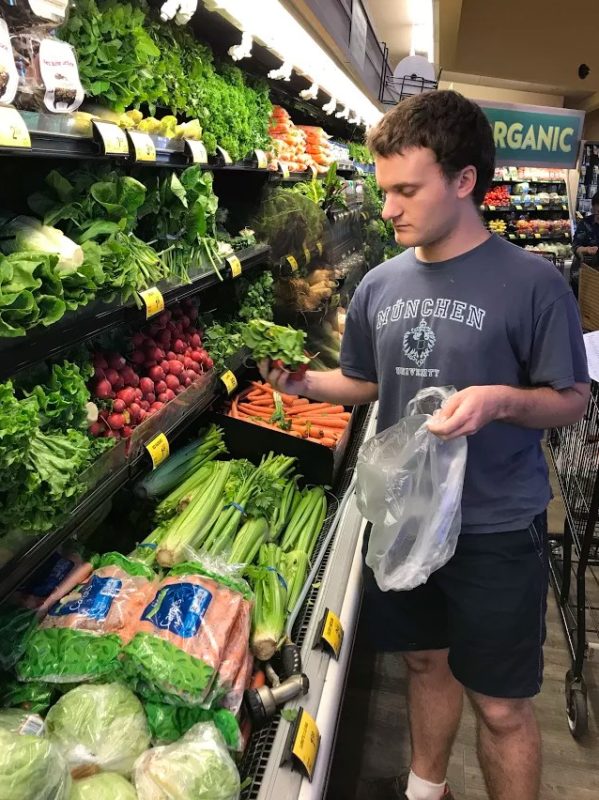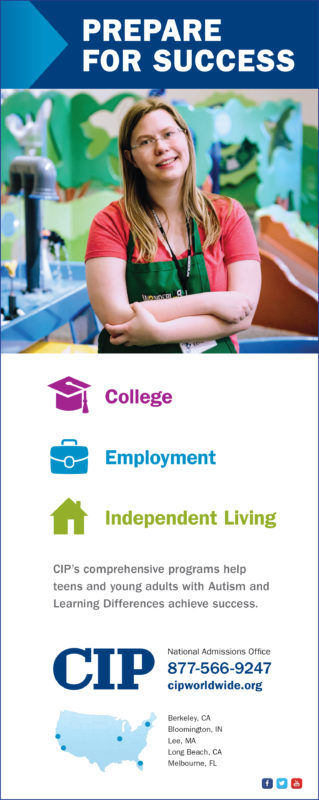When we don’t feel well, it seeps into every aspect of our lives. Lethargy, a poor attitude, inertia, and even maladaptive coping mechanisms can be common signs that we aren’t operating optimally. Although social skills and career skills hog much of the limelight as important areas of function for people on the autism spectrum, I like to understand wellness as the glue that holds our lives together.
As I work with young adults with autism and other learning differences, I have the opportunity to support their health and wellness goals as part of a holistic transition to independence. Some of the students I work with are working through sensory issues with things like the texture of food, the feeling of sweat on their body, even the great outdoors. Others have trouble with coordination, and others yet are genuinely disinterested in cooking or physical activity.
Whatever the reason may be, we can find comfort in knowing that the path to health and healing has always been individualized – and finding what works for people with autism is no different. Below you will find some tricks I use to help students realize success.

Jacob Exploring the Vegetables at the Grocery Store
1) Individualize for Independence
If we can understand health as unique to each individual, then surely it should be up to each person to design their own fitness, diet, and stress management protocols. My students create their own individualized fitness protocols, meal plans, and stress resilience routines.
Given the space to create something for themselves, students choose exercises that they feel confident they can perform, meals that they will realistically eat, and they take advantage of the tools they have in their stress resilience repertoire.
I have recommendations, but I must always bear in mind that they are mere suggestions to remind students of the direction in which they are going. Ultimately, in the transition to successful independence, my students will be the ones to decide what goals they will actually pursue.
Evan, a student of mine, explains, “You can take it into your own hands. If you want to be awesome and fit, do all that stuff and eat a bag of spinach. You need to have a choice in what you do; that way you have the freedom to do what feels right.” Whether we identify as runners, vegetarians, meditators, musicians or otherwise, each person has their own unique wellness goals – the work lies in discovering that profile and pursuing it.
2) Be Realistic: Start Small
Because everyone is at a different place on their wellness goals journey, it is essential that I meet students where they are. For those who could benefit from a new habit or lifestyle change, I must bear in mind that it likely won’t happen easily or overnight. I follow in the footsteps of James Clear, a writer in the field of habit formation and human potential, by encouraging students to make any changes in routine so small that they can’t help but succeed.
Jacob is a student who wants to get into better shape, but has struggled with finding the motivation to exercise independently. He decided to make a small habit of 10 pushups every day for one month. It went so well that he did 20 crunches every day the next month. “When I did it, I liked having done it. I thought, ‘Yay, I did some workout today.’”
Jacob put himself on a trajectory of success. By starting small, he is planting the seeds of follow-through and of commitment to health. Reckoning that he did his daily habit about 80% of the time, a huge improvement on his previous intentions to exercise independently, Jacob is now confident that he will be able to follow-through if he sets his mind to new goals in the future.
Another student, also named Jacob, knows he would benefit from eating more fruits and vegetables. His strategy to start small, by incorporating vegetables into his nightly dinner, came with a surprising discovery: “You get used to it! Now, I like eating veggies more and more. I’ll boil broccoli, asparagus, or cauliflower to eat with every meal.” He still doesn’t eat a lot of fruit, but is easing his way in by being open to trying new recipes that involve fruit.
If I were to put a big bowl of fruit in front of Jacob and say, “Eat this every day if you want to be healthy,” it would be a total turn-off. He wouldn’t trust me, and worse yet, he would continue to avoid fruit. Since he knows he can tolerate trying a small amount of fruit, and that it’s okay to mix it into a greater recipe, he dabbles in the experience and is becoming used to fruit without being overwhelmed by the call to change.
3) Where Intentions Go, Actions Follow
When we are clear about what we want and why and why we want it, living in alignment with our goals is relatively simple.
Anastasia is a student who knew that it would be better for her wallet and her health if she dined out less frequently. Because she enjoys journaling, tracking her meals to see the trajectory of her progress was a natural fit. She says that reducing the number of meals she ate out-on-the-town was “hard at first, but it was a matter of setting the intention, making the promise to myself, and sticking to my goals.”
Anastasia also recalled how helpful it was to have someone checking-in to hold her accountable. Consistent reminders help us reaffirm our intentions, that way we continually make decisions that are aligned with those intentions.
Such reminders can come in many forms, from a person we trust who will hold us accountable, to a recurring event on our calendar, or even an object in our home that we load with meaning, such as a painting of a waterfall in the home that we use as a reminder to stay hydrated.
Conclusion
The reality is that we will forget, we will get too busy, and we will probably even avoid following-through on our commitments to our wellness goals at some point. That is why having reminders and trusted allies to hold us accountable to our intentions are so helpful. We will probably find ourselves wanting to shoot for the moon and have a total life makeover, when we know just one small change that we can actually sustain will plant a hearty seed for future success. The bottom line is that health and well-being are unique to each individual. Everyone must find what is right for him/herself and pursue it, even if it doesn’t seem like “all that and a bag of spinach.”
Mallory Hubl, MS, MA, is the Health and Wellness Coordinator at The College Internship’s Berkeley Center, CIP Berkeley. The College Internship Program (CIP) is a transition program for young adults on the autism spectrum and with learning differences. CIP offers year round and summer programs at five locations nationwide www.cipworldwide.org.






